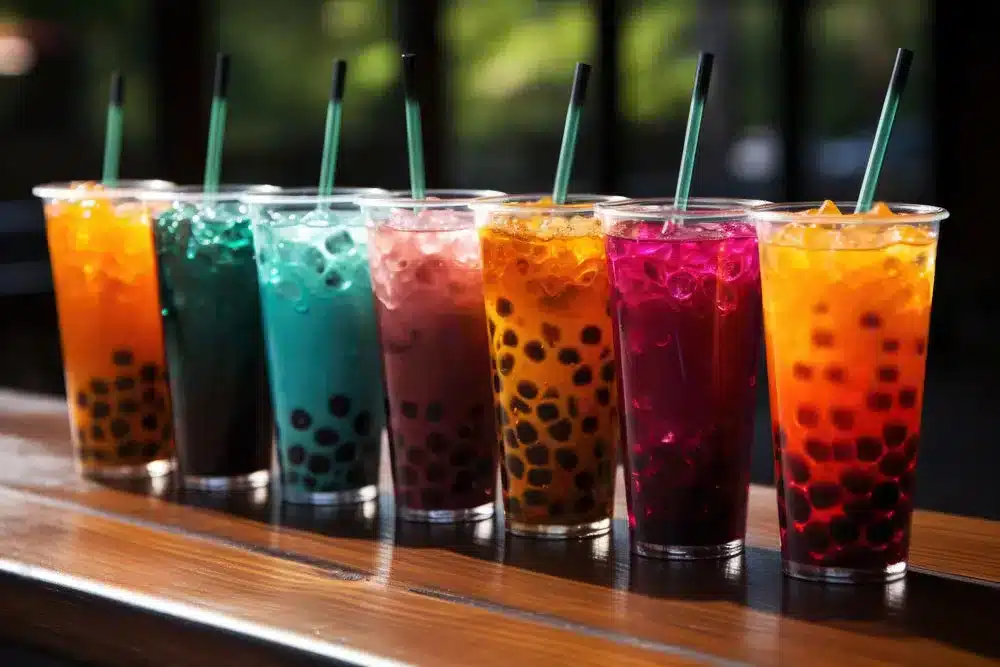How Bubble Tea Tapioca Balls are Made

In this blog we will be unravelling everything you need to know on how this chewy, signature component of bubble tea is made and also take you on a journey through its historical backdrop, the meticulous process of crafting tapioca pearls, quality assurance and the innovative frontiers that are shaping the future of this iconic component.
Historical Backdrop: How Tapioca Pearls Became a Global Sensation
Tapioca's roots extend deep into the culinary history of various cultures, with its origins traced back to South America. Nurtured by the indigenous peoples of the Amazon rainforest, the cassava plant, from which tapioca is derived, made its way across continents over the centuries. Tapioca balls were also eaten as a dessert in Asia and one of the tales of the origin of bubble tea was that it was placed in milk tea as a spontaneous decision and the rest is history. The tapioca pearls in beverages have made their way around the world and now also present themselves in various desserts like ice cream, shaved ice or waffles.
From Cassava to Pearl: Ingredients and Preparation
Indigenous to South America, cassava cultivation has spread worldwide. The starchy tuber undergoes a meticulous process, from harvesting to the extraction of cassava flour, eventually becoming the base ingredient for bubble tea pearls. The ingredients in our bubble tea tapioca balls are tapioca starch, water and other ingredients for their colour and quality. The difference between ingredients in different brands can be checked on the product’s description on our website.
Alongside cassava root, the tapioca balls used in bubble tea include the addition of Brown Sugar Syrup or Hazelnut Syrup which imparts the signature sweetness to the pearls. We offer three types of brown sugar syrup for coating tapioca balls that we offer: TJ Brown Sugar Syrup, TO Brown Sugar Syrup and Artisanal Brown Sugar Syrup.
In terms of colour and texture, the TJ and TO brown sugar syrup are very similar. The subtle differences between the two predominantly lie within their aroma and flavour profiles. TJ syrup is more aromatic than TO syrup, but TO syrup has what could be described as a more ‘traditional’ flavour profile. Our artisanal brown sugar syrup is made in a way that incorporates all the aromas and flavours imparted by the traditional ‘stir-frying’ production method and is perfect for those who seek a more traditional Taiwanese flavour profile. The combination of tapioca’s neutral taste and brown sugar or hazel syrup results in the perfect amount of sweetness that pairs perfectly with the tea.
Our Smearing Brown Sugar Syrup differs from the other brown sugar syrups predominantly in viscosity. This syrup is ideal for streaking designs on bubble tea cups, as its thickness allows for it to retain the shape of these designs even after the liquid is poured in.
Crafting the Pearls: Production Process Unveiled
Tapioca balls are made from tapioca starch from cassava root. We will go through the traditional vs modern methods of making tapioca balls. The traditional process involves precision and patience- the pearls undergo several steps, including boiling, drying and coating with a sweet syrup to enhance flavour. Firstly, it is washed to remove dirt on the outside, grated and then washed again to remove the bitter juice and fibrous materials inside. Then, it is squeezed to obtain the liquid, left to settle and sieved through, forming small and moist granules. They are dried and packaged, ready to be sold.
With the increasing demand for bubble tea worldwide, modern production methods have evolved to meet the scale required. State-of-the-art machinery is now employed to streamline the process, ensuring consistency and efficiency without compromising the integrity of the pearls.
Quality Check: Ensuring the Perfect Chew and Taste
A high-quality tapioca ball will have a perfect balance of chewiness, elasticity and flavour. Quality assurance involves rigorous testing at various stages of production to guarantee that each pearl meets these standards. This is so that the texture and taste of bubble tea tapioca balls are of top quality.
Despite advancements in production, there are common pitfalls that producers must navigate. Issues like inconsistent texture, excessive sweetness or improper cooking times can compromise the quality of tapioca pearls. By employing stringent quality control measures, producers can address these challenges and deliver a consistently exceptional product. When cooking them, be sure that the water is being boiled at a consistent temperature and pour the tapioca so that it is spread throughout the pot. You can watch a video of how to cook our tapioca balls here.
Beyond the Basic: Innovations in Tapioca Ball Flavours and Colours
Beyond the black tapioca balls that everyone knows, the original form of it is actually white, hence the existence of white tapioca. It is less sweet and is a great addition to festive drinks or for those who have a less sweet tooth. Here is a video of how to cook white tapioca.
As the demand for bubble tea continues to rise, the search for unique and enticing flavours grows alongside it. In various locations, a diverse range of tapioca options has emerged, featuring flavours like strawberry, cherry, mango and taro. The introduction of popping boba reflects the industry's commitment to diversifying bubble tea toppings. With an ever-expanding array of flavours, including some you may not have encountered before, the latest emergence is the naturally pigmented popping balls. The future of tapioca pearl production holds promises of even more diverse options.
